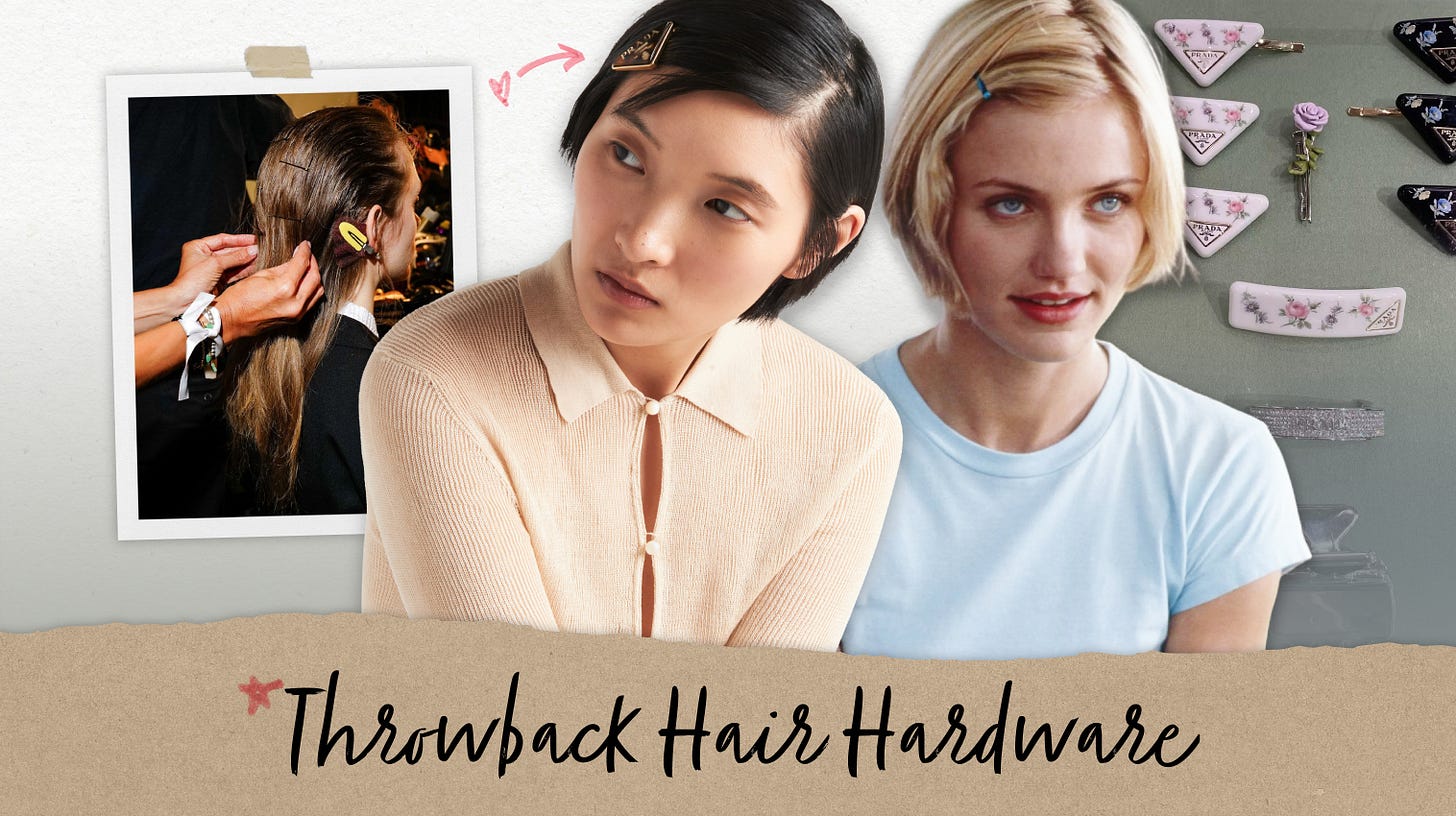Throwback Hair Hardware: The Bobby Pin Revival
How Runways from Khaite to Prada Turned a Utility Item into a Style Statement
Remember Cameron Diaz’s bobby-pinned bob in Something About Mary (1998)? That once-humble accessory is suddenly everywhere again, elevated from invisible hardware to headline styling detail on the SS26 runways. What’s happening here is bigger than a nostalgic callback: it’s a marker of how utility is being re-coded as style. Once tucked away, pins are now proudly displayed, signaling a cultural shift toward pragmatism and transparency, where the everyday becomes aesthetically appealing.
The revival also rides a ’90s nostalgia wave, with Guido Palau’s undone buns at Khaite channeling gritty beauty codes that Gen Z finds lo-fi and authentic. At Sandy Liang, bobby pins took a softer, whimsical turn, paired with pearl clips and rhinestone barrettes to anchor sleek side parts. Over in Milan, Prada doubled down, multiplying pins across slicked-back styles and reimagining them with logos, gemstones, and candy-bright kidulting colors, proof that even the smallest accessory can hold luxury weight. The ripple effect is already being spotted in media: Marie Claire UK highlighted “Statement Bobby Pins” as a key beauty trend from London Fashion Week SS26, reinforcing their shift from backstage tool to front-row talking point.
Why It Matters: Crucially, the bobby pin is ripe for amplification. It’s inexpensive, ultra-Instagrammable, and easy for consumers to replicate at home, making it a likely micro-trend accelerator. As with the lipstick index, this signals the potential for bobby pins to become “little luxury” tokens—democratic enough for mass adoption but versatile enough for premium reinvention through capsule drops, gifting formats, and brand collaborations. The smallest accessory on the runway may well become the biggest beauty signal off it!




